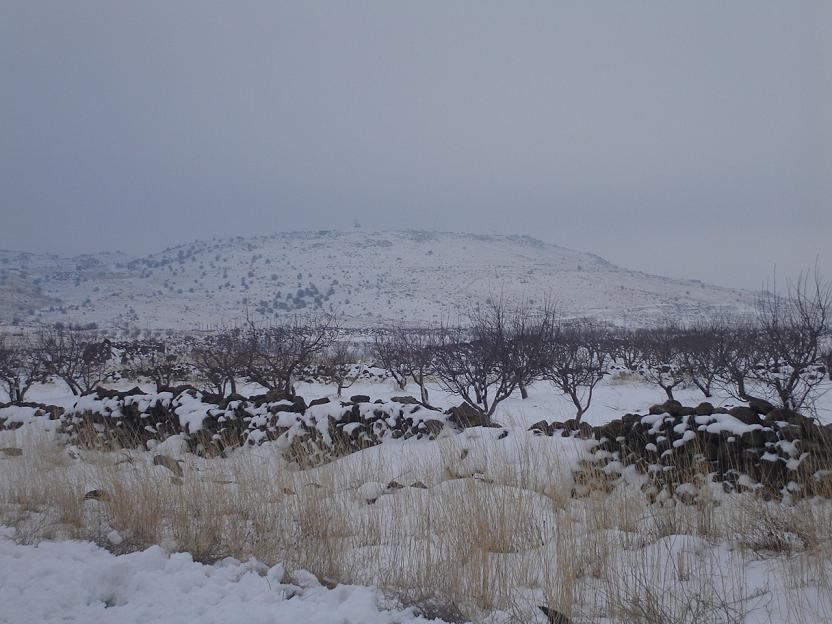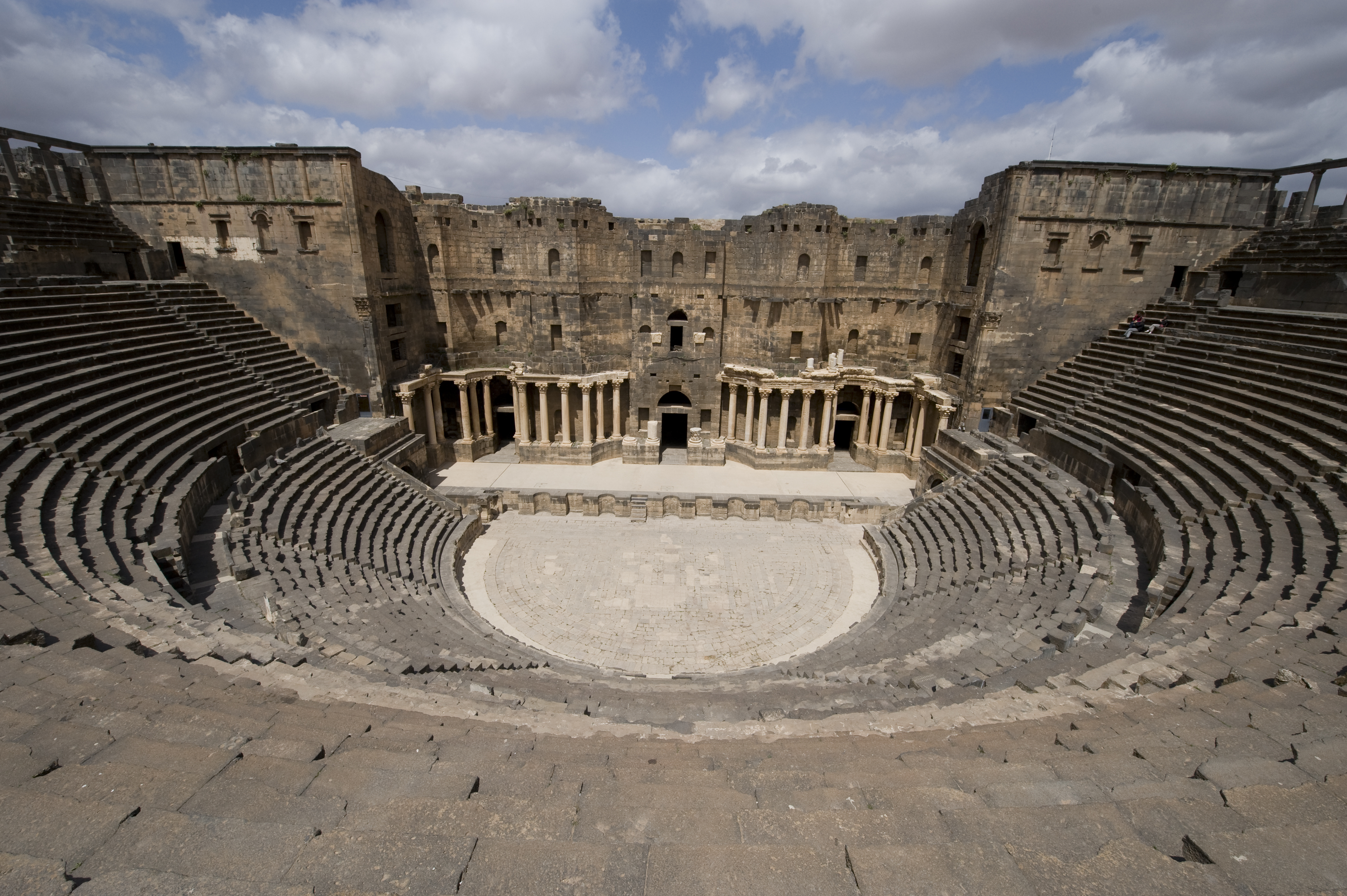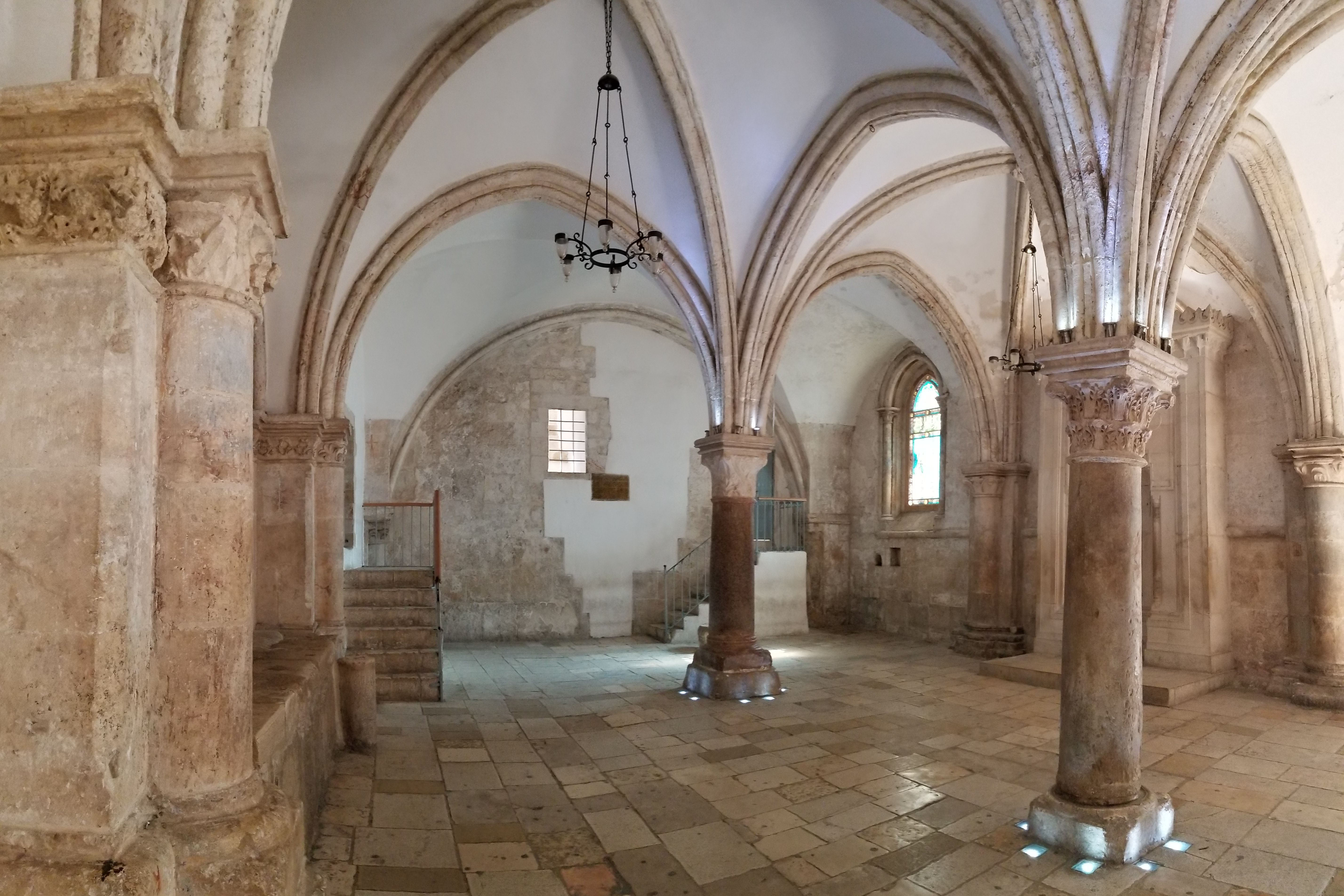|
Izra'
Izra or Izraa () is a town in the Daraa Governorate of Syria, to the north of the city of Daraa. It is the administrative centre of the Izra District, and sits at an altitude of 599 metres. Izra had a population of 19,158 in 2004, according to the Central Bureau of Statistics (Syria), Syria Central Bureau of Statistics (CBS). Its inhabitants are predominantly Sunni Muslim.General Census of Population and Housing 2004 Central Bureau of Statistics (Syria), Syria Central Bureau of Statistics (CBS). Daraa Governorate. History Izra was a Canaanite city mentioned in the Bible as Zorava, Zorowa or Zorabene. Located 80 km south of Damascus in the northern section of the Province of Daraa, its name appears in the ...[...More Info...] [...Related Items...] OR: [Wikipedia] [Google] [Baidu] |
Lajat
The Lajat (/ALA-LC: ''al-Lajāʾ''), also spelled ''Lejat'', ''Lajah'', ''el-Leja'' or ''Laja'', is the largest lava field in southern Syria, spanning some 900 square kilometers. Located about southeast of Damascus, the Lajat borders the Hauran plain to the west and the foothills of Jabal al-Druze to the south. The average elevation is between 600 and 700 meters above sea level, with the highest volcanic cone being 1,159 meters above sea level. Receiving little annual rainfall, the Lajat is largely barren, though there are scattered patches of arable land in some of its depressions. The region has been known by a number of names throughout its history, including "Argob" ( ''’Argōḇ'',) in the Hebrew Bible and "Trachonitis" () by the Hellenistic period, Greeks, a name under which it is mentioned in the Gospel of Luke (Luke 3, ). Long inhabited by Arab groups, it saw development under the Roman Empire, Romans, who built a road through the center of the region connecting it wi ... [...More Info...] [...Related Items...] OR: [Wikipedia] [Google] [Baidu] |
Izra District
Izra District () is a district (''mintaqah'') administratively belonging to Daraa Governorate, Syria. At the 2004 Census it had a population of 246,804. Its administrative centre An administrative centre is a seat of regional administration or local government, or a county town, or the place where the central administration of a commune, is located. In countries with French as the administrative language, such as Belgi ... is the city of Izra. Sub-districts The district of Izra is divided into six sub-districts, or '' nawāḥī'' (population according to 2004 official census): * Izra Subdistrict (): population 56,760. * Jasim Subdistrict (): population 39,624. * Al-Hirak Subdistrict (): population 40,979. * Nawa Subdistrict (): population 57,404. * Al-Shaykh Subdistrict (): population 34,370. * Tasil Subdistrict (): population 17,778. References Districts of Daraa Governorate {{DaraaSY-geo-stub ... [...More Info...] [...Related Items...] OR: [Wikipedia] [Google] [Baidu] |
Syria
Syria, officially the Syrian Arab Republic, is a country in West Asia located in the Eastern Mediterranean and the Levant. It borders the Mediterranean Sea to the west, Turkey to Syria–Turkey border, the north, Iraq to Iraq–Syria border, the east and southeast, Jordan to Jordan–Syria border, the south, and Israel and Lebanon to Lebanon–Syria border, the southwest. It is a republic under Syrian transitional government, a transitional government and comprises Governorates of Syria, 14 governorates. Damascus is the capital and largest city. With a population of 25 million across an area of , it is the List of countries and dependencies by population, 57th-most populous and List of countries and dependencies by area, 87th-largest country. The name "Syria" historically referred to a Syria (region), wider region. The modern state encompasses the sites of several ancient kingdoms and empires, including the Eblan civilization. Damascus was the seat of the Umayyad Caliphate and ... [...More Info...] [...Related Items...] OR: [Wikipedia] [Google] [Baidu] |
Al-Sanamayn
Al-Sanamayn (, also spelled Sanamein, Sanamain, Sunamein) is a city in southern Syria, administratively part of the Daraa Governorate and the center of al-Sanamayn District. It is located north of Daraa and south of Damascus. Nearby localities include Kafr Shams to the northwest, Deir al-Bukht to the north, Jabab to the northeast, Bassir to the east, Tubna to the southeast, Inkhil to the southwest and Qayta to the west. According to the Central Bureau of Statistics (Syria), Syria Central Bureau of Statistics (CBS), al-Sanamayn had a population of 26,268 in the 2004 census. In addition to being capital of the al-Sanamayn District, the city is also the administrative center and second largest locality of the al-Sanamayn ''nahiyah'' ("subdistrict") which consists of 16 localities with a collective population of 113,316 in 2004. Throughout its long history, the two idols have had several names, the last of which was its current name, which goes back to the presence of two distinct ... [...More Info...] [...Related Items...] OR: [Wikipedia] [Google] [Baidu] |
Hauran
The Hauran (; also spelled ''Hawran'' or ''Houran'') is a region that spans parts of southern Syria and northern Jordan. It is bound in the north by the Ghouta oasis, to the northeast by the al-Safa field, to the east and south by the Harrat al-Sham and to the west by the Golan Heights. Traditionally, the Hauran consists of three subregions: the Nuqrah and Jaydur plains, the Jabal al-Druze massif, and the Lajat volcanic field. The population of the Hauran is largely Arab, but religiously heterogeneous; most inhabitants of the plains are Sunni Muslims belonging to large agrarian clans, while Druze form the majority in the eponymous Jabal al-Druze and a significant Greek Orthodox and Greek Catholic minority inhabit the western foothills of Jabal al-Druze. The region's largest towns are Daraa, al-Ramtha, and al-Suwayda. From the mid-1st century BC, the region was governed by the Roman Empire's Herodian and Nabatean client kings until it was formally annexed by the empire in ... [...More Info...] [...Related Items...] OR: [Wikipedia] [Google] [Baidu] |
Ismail Abulfida
Ismāʿīl bin ʿAlī bin Maḥmūd bin Muḥammad bin ʿUmar bin Shāhanshāh bin Ayyūb bin Shādī bin Marwān (), better known as Abū al-Fidāʾ or Abulfeda (; November 127327 October 1331), was a Mamluk-era Kurdish geographer, historian, Ayyubid prince and local governor of Hama. Life Abu'l-Fida was born in Damascus, where his father Malik ul-Afdal, brother of Emir Al-Mansur Muhammad II of Hama, had fled from the Mongols. Abu'l-Fida was an Ayyubid prince of Kurdish origin. In his boyhood he devoted himself to the study of the Qur'an and the sciences, but from his twelfth year onward, he was almost constantly engaged in military expeditions, chiefly against the Crusaders. In 1285 he was present at the attack on a stronghold of the Knights of St. John, and took part in the sieges of Tripoli, Acre and Qal'at ar-Rum. In 1298 he entered the service of the Mamluk sultan Malik al-Nasir and after twelve years was invested by him with the governorship of Hama. In 1312 he became p ... [...More Info...] [...Related Items...] OR: [Wikipedia] [Google] [Baidu] |
An-Nasir Yusuf
An-Nasir Yusuf (; AD 1228–1260), fully al-Malik al-Nasir Salah al-Din Yusuf ibn al-Aziz ibn al-Zahir ibn Salah al-Din Yusuf ibn Ayyub ibn Shazy (), was the Ayyubid Kurdish Emir of Syria from his seat in Aleppo (1236–1260), and the Sultan of the Ayyubid Empire from 1250 until the sack of Aleppo by the Mongols in 1260. Background An-Nasir Yusuf was the great-grandson of Saladin. He became the Ayyubid ruler of Aleppo when he was seven-years-old after the death of his father Al-Aziz Muhammad. He was placed under a four-man regency council, consisting of the vizier Ibn al-Qifti, the emir Shams al-Din Lu'lu' al-Amini, the emir 'Izz al-Din 'Umar ibn Mujalli and Jamal al-Dawla Iqbal. The last was the representative of an-Nasir's grandmother, Dayfa Khatun, daughter of Al-Adil I, who was the effective ruler until her death in 1242. Thereafter until his death in 1251, Shams al-Din was an-Nasir's commander-in-chief and most influential advisor. His most loyal troops were ... [...More Info...] [...Related Items...] OR: [Wikipedia] [Google] [Baidu] |
Arabia Petraea
Arabia Petraea or Petrea, also known as Rome's Arabian Province or simply Arabia, was a frontier Roman province, province of the Roman Empire beginning in the 2nd century. It consisted of the former Nabataean Kingdom in the southern Levant, the Sinai Peninsula, and the northwestern Arabian Peninsula. Its capital was Petra. It was bordered on the north by Syria (Roman province), Syria, on the west by Judea (Roman province), Judaea (renamed Syria Palaestina in AD 135) and Roman Egypt, Egypt, and on the south and east by the rest of Arabia, known as Arabia Deserta and Arabia Felix. The territory was annexed by Emperor Trajan, like many other eastern frontier provinces of the Roman Empire, but held onto, unlike Roman Armenia, Armenia, Mesopotamia (Roman province), Mesopotamia and Assyria (Roman province), Assyria, well after Trajan's rule, its desert frontier being called the Limes Arabicus. It produced the Emperor Philip the Arab, Philippus, who was born around 204. As a frontier ... [...More Info...] [...Related Items...] OR: [Wikipedia] [Google] [Baidu] |
Bosra
Bosra (), formerly Bostra () and officially called Busra al-Sham (), is a town in southern Syria, administratively belonging to the Daraa District of the Daraa Governorate and geographically part of the Hauran region. Bosra is an ancient city mentioned in 14th century BC Egyptian sources. A key Nabatean city, it became the prosperous provincial capital of the Roman province of Arabia Petraea following the dissolvement of the Nabatean kingdom. With the advent of Christianity, Bostra flourished as a Metropolitan Archbishopric, under the jurisdiction of Eastern Orthodox Patriarchate of Antioch and All the East. It also became a Latin Catholic titular see and the episcopal see of a Melkite Catholic Archeparchy. Throughout its history under various Muslim rulers, the city maintained its strategic importance as Syria's southern gateway. It attracted attention from Damascus' rulers and was governed by various lords, serving as a hub for Islamic learning and endowments. However, ... [...More Info...] [...Related Items...] OR: [Wikipedia] [Google] [Baidu] |
Holy Land
The term "Holy Land" is used to collectively denote areas of the Southern Levant that hold great significance in the Abrahamic religions, primarily because of their association with people and events featured in the Bible. It is traditionally synonymous with what is known as the Land of Israel ( Zion) or the Promised Land in a biblical or religious context, or as Canaan or Palestine in a secular or geographic context—referring to a region that is mostly between the Mediterranean Sea and the Jordan River. Today, it chiefly overlaps with the combined territory of the modern states of Israel and Palestine. Most notable among the religions that tie substantial spiritual value to the Holy Land are Judaism, Christianity, and Islam. A considerable part of the Holy Land's importance derives from Jerusalem, which is regarded as extremely sacred in and of itself. It is the holiest city in Judaism and Christianity and the third-holiest city in Islam (behind Mecca and Medina in ... [...More Info...] [...Related Items...] OR: [Wikipedia] [Google] [Baidu] |
Christian Mission
A Christian mission is an organized effort to carry on evangelism, in the name of the Christian faith. Missions involve sending individuals and groups across boundaries, most commonly geographical boundaries. Sometimes individuals are sent and are called missionary, missionaries, and historically may have been based in mission stations. When groups are sent, they are often called mission teams and they undertake mission trips. There are a few different kinds of mission trips: Short-term mission, short-term, long-term, relational and those that simply help people in need. Some people choose to dedicate their whole lives to mission. Missionaries preach the Christian faith and sometimes administer the sacraments, and provide humanitarian aid or services. Christian doctrines (such as the "Doctrine of Love" professed by many missions) permit the provision of aid without requiring religious conversion. Nonetheless, the provision of help has always been closely tied to evangelization ef ... [...More Info...] [...Related Items...] OR: [Wikipedia] [Google] [Baidu] |
Christianity
Christianity is an Abrahamic monotheistic religion, which states that Jesus in Christianity, Jesus is the Son of God (Christianity), Son of God and Resurrection of Jesus, rose from the dead after his Crucifixion of Jesus, crucifixion, whose coming as the Messiah#Christianity, messiah (Christ (title), Christ) was Old Testament messianic prophecies quoted in the New Testament, prophesied in the Old Testament and chronicled in the New Testament. It is the Major religious groups, world's largest and most widespread religion with over 2.3 billion followers, comprising around 28.8% of the world population. Its adherents, known as Christians, are estimated to make up a majority of the population in Christianity by country, 157 countries and territories. Christianity remains Christian culture, culturally diverse in its Western Christianity, Western and Eastern Christianity, Eastern branches, and doctrinally diverse concerning Justification (theology), justification and the natur ... [...More Info...] [...Related Items...] OR: [Wikipedia] [Google] [Baidu] |





